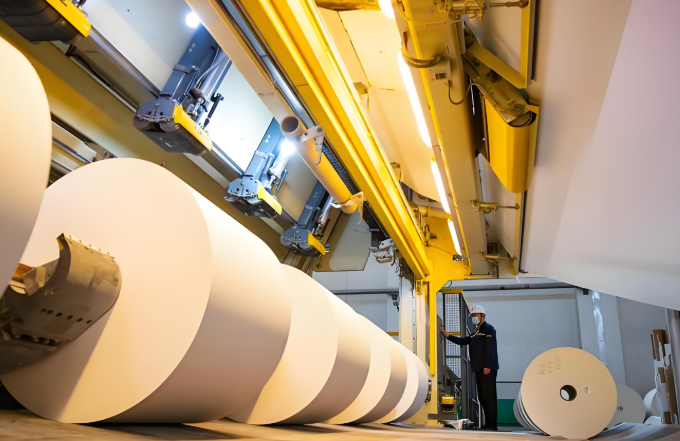Oct 18, 2025

Egypt's paper industry, with historical roots tracing back to ancient papyrus production, has evolved into a strategically significant sector within the Middle East and North Africa (MENA) region. Leveraging its unique geographical advantages, growing domestic market, and ongoing technological modernization, the industry is poised for sustained expansion despite challenges related to resource dependency and environmental pressures.
The origins of papermaking in Egypt date to around 3000 BCE, when ancient Egyptians utilized papyrus and reeds from the Nile to create some of the world’s earliest writing materials. Although this traditional craft declined for centuries, it experienced a revival in the 20th century. The first modern paper mills, such as the Alexandria Paper Company established in the 1950s, laid the foundation for industrial-scale production. Through privatization reforms and international partnerships in the 2000s, Egypt’s paper sector shifted from state-dominated operations to a more competitive, market-driven structure. Today, the industry supports key economic domains such as education, packaging, and publishing, with an annual production capacity of approximately 350,000 tons and a market value of $1.2 billion as of 2023.
Egypt’s paper market is characterized by a mix of large public-sector enterprises and dynamic private manufacturers. Leading companies like Egyptian Paper Manufacturing Company (EPMC) and Sidi Kerir Petrochemicals (SIDPEC) dominate the landscape, accounting for about 30% of domestic market share. EPMC, for instance, operates with an annual capacity of 100,000 tons and exports products to neighboring countries such as Sudan. Meanwhile, smaller firms have emerged focusing on high-value segments, including recycled paper and specialty packaging. The industry’s output is diversified, with packaging paper representing over 60% of production—driven by e-commerce growth—while writing and printing papers cater to educational and administrative needs.
Several factors underpin the industry’s growth. Egypt’s population of over 105 million, with an annual growth rate of 2%, creates steady demand for paper products, particularly in packaging and hygiene sectors. The expansion of e-commerce has boosted packaging paper demand by 8–15% annually, while government initiatives to build 1,000 new schools have amplified needs for educational materials. Internationally, Egypt’s strategic location facilitates exports to Europe, Africa, and the Middle East via the Suez Canal, supported by free trade agreements that reduce tariffs. Per capita paper consumption has risen from 15 kg in 2018 to 18 kg in 2022, reflecting rising living standards and industrial activity.
A primary constraint is Egypt’s heavy reliance on imported wood pulp, which constitutes 70% of raw materials and exposes producers to global price volatility. Water scarcity also poses a risk, as paper manufacturing accounts for 10% of industrial water use, and recurring droughts have occasionally reduced output. In response, companies are adopting sustainable practices. For example, EPMC has invested in wastepaper recycling, which now supplies 40% of its raw material, while Nile Paper Industries employs water-circulation systems to reduce consumption by 30%. The government’s “2030 Vision” promotes green manufacturing, offering tax incentives for projects that utilize renewable energy or recycled fibers.
To enhance efficiency, Egyptian paper manufacturers are integrating automation and digital technologies. Collaborations with European firms have introduced AI-controlled systems that lower energy use by 20% and increase production by 15%. The industry’s digitalization rate has risen from 40% in 2020 to 60% in 2023, improving product quality and supply chain management. Additionally, initiatives like SIDPEC’s pilot project to convert agricultural waste into packaging paper demonstrate innovation in leveraging local resources. These advancements help narrow the gap with global competitors and support export growth, which reached $300 million in 2023.
The sector is expected to grow steadily, with production projected to reach 500,000 tons by 2030. Government policies, such as tax exemptions for recycling projects and infrastructure upgrades, will likely attract further investment. Upcoming events like the Print2Pack exhibition in Cairo highlight Egypt’s role as a regional hub for paper and packaging technologies. While challenges persist, the industry’s commitment to sustainability, coupled with rising regional demand, positions Egypt to strengthen its status as a key player in the global paper market.
In summary, Egypt’s paper industry combines historical legacy with modern innovation, supported by strategic geographic and demographic advantages. By addressing resource dependencies through technological upgrades and sustainable practices, the sector is well-equipped to capitalize on both domestic and international opportunities in the coming years.
Main Products
Social Media
Social Media
Contact Us
+86 0512 5510 8067
Room 3, No.2159, Beimen Road, Yushan Town, Kunshan City, Jiangsu Province, China
Inquiry
Inquiry
News Center

November 29, 2025

November 24, 2025
Algeria's Paper Packaging Industry: A Rising African Powerhouse